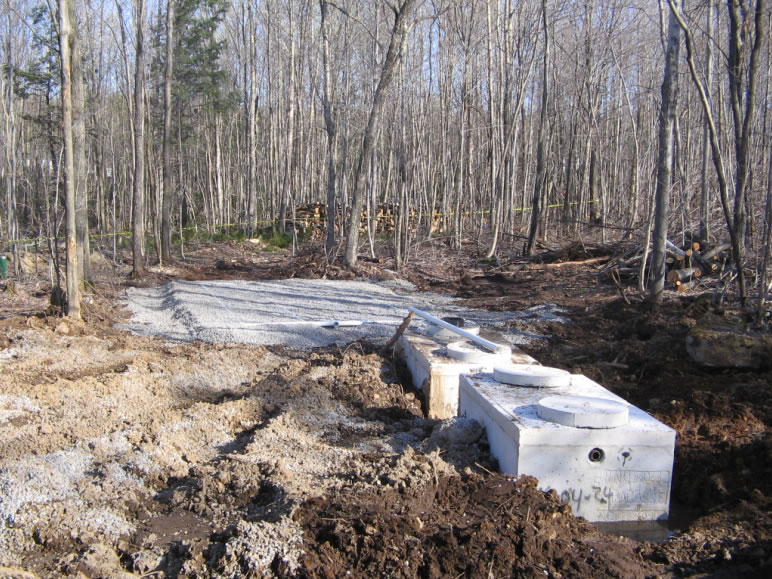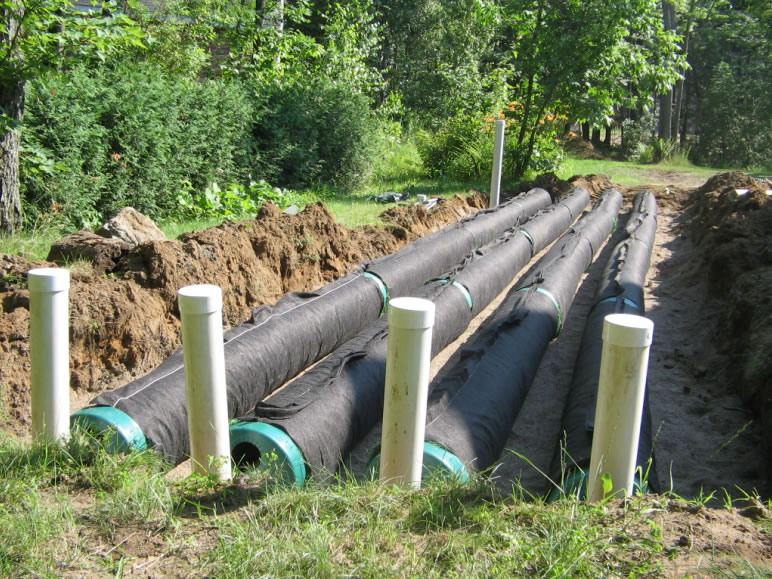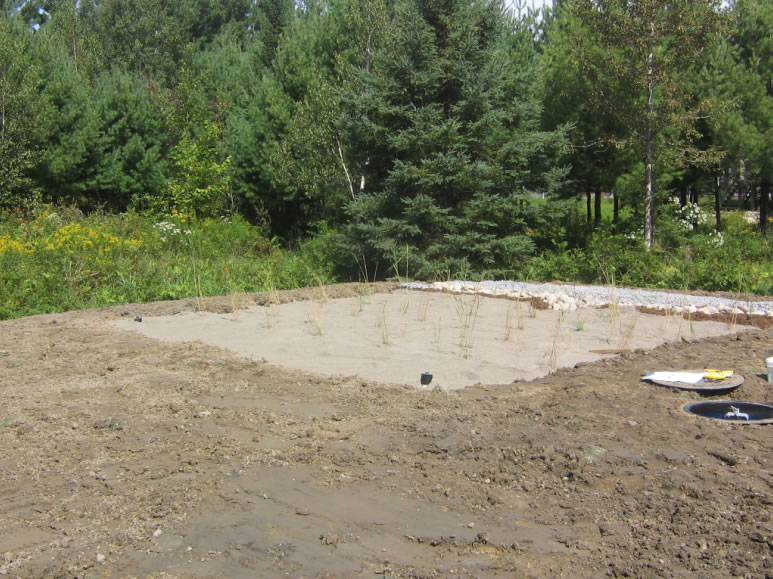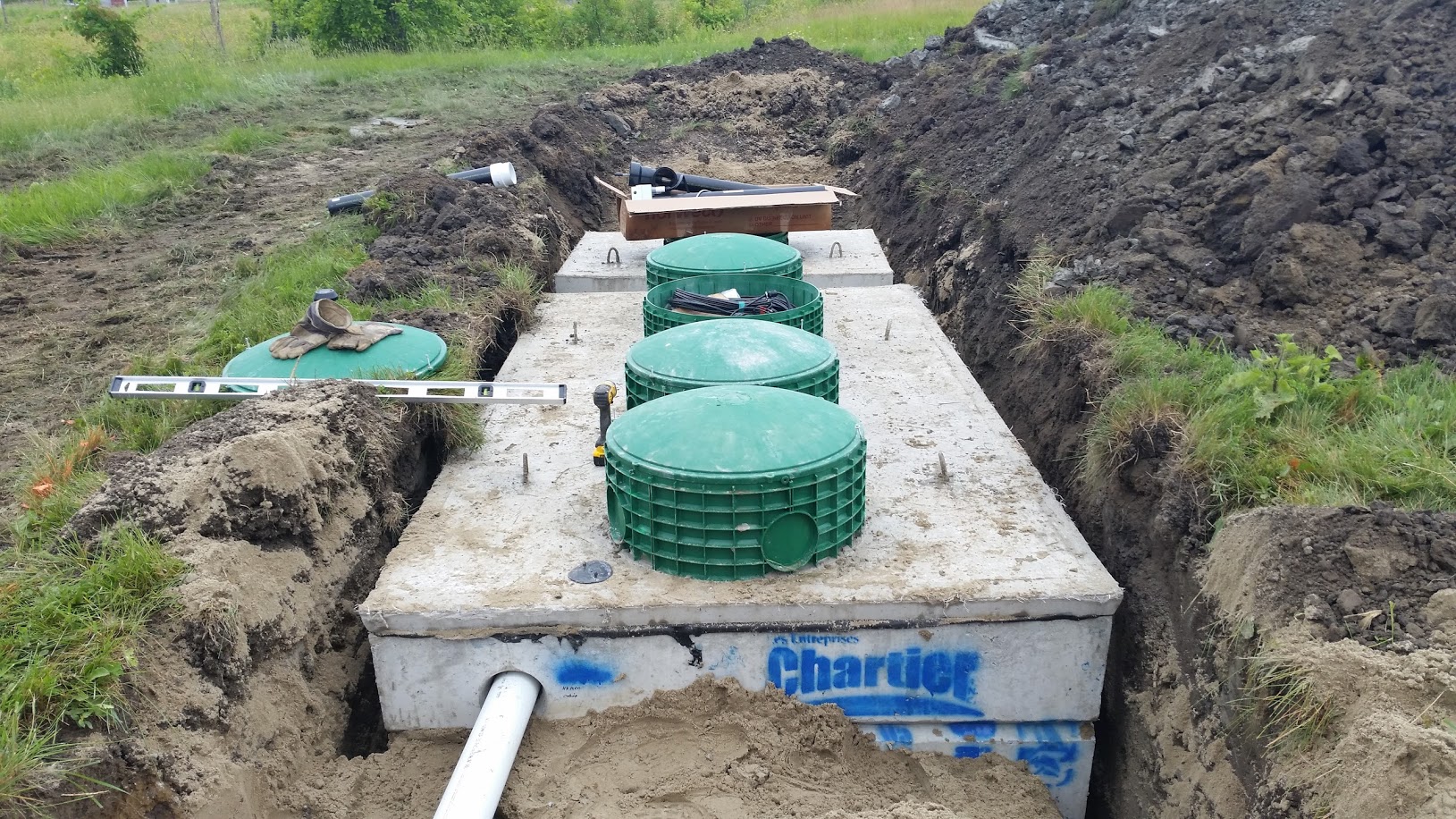Installation and emptying of septic tank North Shore
SEPTIC SYSTEMS
This guide provides an overview of the different septic systems available on the market. It’s important to note that each of these technologies has been certified by the BNQ (Bureau de normalisation du Québec, the province’s governing body on standardization and certification) and is therefore approved for the treatment of wastewater. For more information, refer to the organization’s website: https://www.bnq.qc.ca/en/.
Bionest
www.bionest.caThe Bionest is a concrete reservoir similar to a septic tank.
How it works: the system comprises a septic tank followed by the Bionest reactor and a leach field. When infiltration through the soil isn’t possible, a BIO-UV disinfection unit can be installed in the Bionest reactor as a tertiary system. This device uses ultraviolet light to eliminate harmful waste and bacteria present in wastewater before releasing it directly into the environment (under certain conditions).
Properties:
- Septic tank and Bionest systems buried underground
- The leach field can be slightly raised or completely buried
- Annual inspection required

Ecoflo
www.ptaqua.comThe Ecoflo Biofilter operates using a fibreglass shell containing peat moss.
How it works: the system, which lies on a bed of gravel, comprises a septic tank followed by the Ecoflo Biofilter. Ecoflo models that include bottoms must be followed by a leach field. When infiltration through the soil isn’t possible, an FDI disinfection unit can be installed downstream from the Ecoflo Biofilter as a tertiary system. Gravity will then release the treated water directly into the environment (under certain conditions).
Properties:
- Septic tank and Ecoflo systems are completely buried underground
- The Ecoflo may be slightly raised, forming a noticeable mound
- No electromechanical components required (unless a pumping station is needed)
- Cost-effective operation
- High probability of a pumping station needed between the septic tank and the Ecoflo
- Peat moss should be replaced every eight to ten years
- Annual inspection required

Enviro-Septic
www.enviro-septic.comHow it works: the Enviro-Septic system comprises septic tank followed by a series of perforated cylindrical pipes made of high-density polyethylene and encased in a polypropylene fibre membrane.
Properties:
- Enviro-Septic system can be either slightly raised or completely buried underground
- A three- to four-foot-long vertical vent pipe is installed at the end of the field
- No electromechanical components required (unless a pumping station is needed)
- No operating costs
- Annual inspection required

Ecophyltre
www.epurika.comHow it works: the Ecophyltre system accurately reproduces the conditions of a natural swamp to filter wastewater before sending it to a leach field for final purification. When infiltration through the soil isn’t possible, a class V Ecophyltre unit can be installed as a tertiary system to disinfect water before releasing it into the environment (under certain conditions).
Properties:
- Natural technology that recreates the conditions of naturally occurring wetlands
- The leach field can be buried either underground or beneath the swamp area
- A simple, passive and rustic treatment process
- Annual inspection required

Norweco
www.enviro-step.ca/quebec/fr/residentiel/hydro-kinetic-feu-residentielHydro-Kinetic system: a wastewater treatment solution that uses an innovative hydrokinetic filtration technology to produce the purest possible results.
How it works: the system pre-treats, aerates, filters and regulates the flow of wastewater and outputs only the purest water as a result. All of the steps are ensured by reliable components and a simple, easy-to-use control. The integrity of the treatment is protected by a patented non-mechanical flow-regulating device and a Hydro-Kinetic filter.
Properties:
- Also available as an advanced system or as a tertiary system with UV lamp

Other systems
Systems that require periodical emptying
- - Wastewater from lavatories is directed to a holding tank, where it is later emptied into a tanker truck
- - Grey water is directed to a drain field (no purification)
- - Traditional toilets should ideally be replaced with low-flow models
- - This system can only be added to existing homes
- - Modifications to the building’s plumbing system are necessary
- - The drain field can be either buried or raised by 60 centimetres in relation to the ground
- - No minimum distance from a well or other potable water source has been set
- - Systems that need to be emptied periodically should only be considered if none of the aforementioned systems are suitable
SEALED TUBE WELLS
The digger in charge of sealing the tube well must be supervised for the duration of the job. A certificate, signed by a member of a competent professional order, must be submitted to the government after the work has been completed in order to comply with current legislation (c. Q-2, r. 35).

